Review: What Joy! How to Stay and Not Flee
What Joy! How to Stay and Not Flee
By Veronica Stone (Woman’s Missionary Union)
What freezes someone with fear? What causes that fear to take flight? A Chinese drug dog’s sniffs and a tiny room for questioning? Infertility followed by a problem pregnancy where there’s no advanced care? Financial betrayal by “trusted” church members/business partners? A spitting cobra in the living room?
 How do missionaries weather not only the day-to-day challenges of language and culture, but also massive storms of medical emergencies, a global pandemic and spiritual warfare? Missionary Veronica Stone shares her story and those of her husband Ron and children Anna and Abe in What Joy! How to Stay and Not Flee.
How do missionaries weather not only the day-to-day challenges of language and culture, but also massive storms of medical emergencies, a global pandemic and spiritual warfare? Missionary Veronica Stone shares her story and those of her husband Ron and children Anna and Abe in What Joy! How to Stay and Not Flee.
The saga begins when Veronica discovers a one-year teaching job in Korea online when filling out applications and goes for it. The Christian school eventually hires Ron as well, and the newlyweds begin what would become their entrée into international missions.
Taking a detour on their return home, they arrange to spend 10 days “sharing the gospel alongside two missionaries who worked with unreached people.” They arrive in the United States with a new call, and after several years of seminary and preparation, they leave for international mission service in the marketplace.
Veronica’s experiences evoke laughter as she discusses packing for that first term, suffers a horrendous haircut because of language misunderstanding, and becomes a regular wedding crasher with her husband to get to know people and begin conversations. Other accounts bring tears, including saying good-bye to her beloved dog, enduring obtrusive personal questions, and almost dying from an allergic reaction after she receives medication at a local hospital.
Yet, God remains faithful as he times perfectly the births of Anna and Abe, provides a Christian “Auntie Cora” as mentor and friend, guides the family through “unexpected turbulence,” and provides a support system of family, friends and volunteers near and far.
Joy comes in service, in seeing God move in the hearts of the lost, in watching him speak to their children, and even sometimes in suffering but never suffering alone.
Not only does the missionary help readers step into her shoes, but she also offers subtle ideas of how to support missionaries—from adopting their dog when they leave for the field to sending snapshots from home to simply listening and encouraging—usually by email—without trying to offer advice or fix things.
At fewer than 120 pages, Veronica Stone’s What Joy! How to Stay and Not Flee is a quick, sometimes funny, and always inspiring read that provides lessons for anyone desiring to live on mission.
Kathy Robinson Hillman, former president
Texas WMU and Baptist General Convention of Texas
Waco
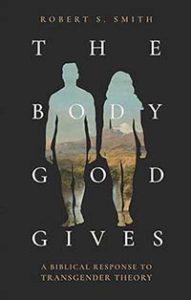 Smith has published two previous books addressing gender identity at a more popular level. His third book on the topic, The Body God Gives, is a much more in-depth study aimed at a scholarly audience.
Smith has published two previous books addressing gender identity at a more popular level. His third book on the topic, The Body God Gives, is a much more in-depth study aimed at a scholarly audience. York’s book beautifully illuminates the musician’s contributions to the changing landscape of sacred music in the 20th century while balancing the nuances of his musical genius, spiritual grounding, and commitment to the church and authentic worship with the business of contemporary Christian music.
York’s book beautifully illuminates the musician’s contributions to the changing landscape of sacred music in the 20th century while balancing the nuances of his musical genius, spiritual grounding, and commitment to the church and authentic worship with the business of contemporary Christian music. Lee Spitzer is historian for the Baptist World Alliance and retired general secretary of the American Baptist Churches USA. Good News for the World represents a years-long labor of his love for Baptists, compiling for the first time in one volume the 422 resolutions, official statements and messages adopted during BWA’s history from 1905 to 2023.
Lee Spitzer is historian for the Baptist World Alliance and retired general secretary of the American Baptist Churches USA. Good News for the World represents a years-long labor of his love for Baptists, compiling for the first time in one volume the 422 resolutions, official statements and messages adopted during BWA’s history from 1905 to 2023.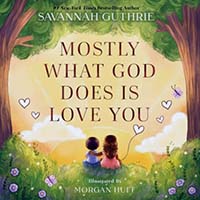 Outstanding picture book illustrators bring an author’s words to life in connected two-page spreads. Morgan Huff’s art and Savannah Guthrie’s copy perfectly complement each other. The delightful images of children and adults feature differing shapes, sizes, ages, colors and a few added glasses, broken bones or wheel chairs. And clearly, mostly what God does is love them.
Outstanding picture book illustrators bring an author’s words to life in connected two-page spreads. Morgan Huff’s art and Savannah Guthrie’s copy perfectly complement each other. The delightful images of children and adults feature differing shapes, sizes, ages, colors and a few added glasses, broken bones or wheel chairs. And clearly, mostly what God does is love them. When white men overwhelmingly are found to be holding the gun in mass casualty shootings, and white men are the most likely to die by suicide, it begs the question: what is going on with young, white men in this country?
When white men overwhelmingly are found to be holding the gun in mass casualty shootings, and white men are the most likely to die by suicide, it begs the question: what is going on with young, white men in this country?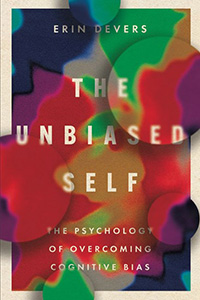 Erin Devers doesn’t smoke out the best BBQ, but she does shine a light on a common human malady—the inability to know everything about everything all the time. Bias results from our human limitations.
Erin Devers doesn’t smoke out the best BBQ, but she does shine a light on a common human malady—the inability to know everything about everything all the time. Bias results from our human limitations.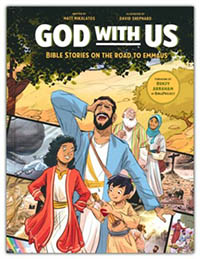
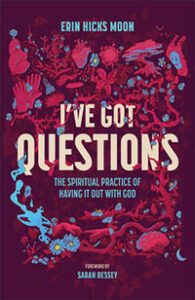
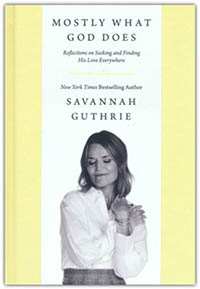
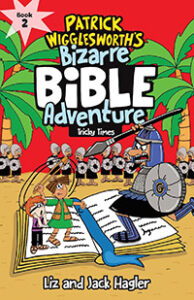 Patrick starts his second journal upside-down as he begins 5th grade in a redistricted school with few kids from his old campus. As Joshua drags him into his Bible trek, the tween reviews Genesis through Deuteronomy in single sentences like, “Exodus: I saw Moses blast Pharaoh” and “Leviticus: I got squished by God’s rules.”
Patrick starts his second journal upside-down as he begins 5th grade in a redistricted school with few kids from his old campus. As Joshua drags him into his Bible trek, the tween reviews Genesis through Deuteronomy in single sentences like, “Exodus: I saw Moses blast Pharaoh” and “Leviticus: I got squished by God’s rules.”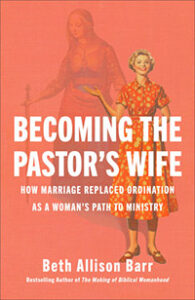 Barr describes how the role of pastor’s wife took shape over the last century by analyzing, along with her research assistants Katie Heatherly and Brooke LeFevre, 150 books for ministers’ wives published from 1923 to 2023. The authors of these books represent evangelical, mainline and Black denominations and lay out expectations for how a pastor’s wife will look and conduct herself.
Barr describes how the role of pastor’s wife took shape over the last century by analyzing, along with her research assistants Katie Heatherly and Brooke LeFevre, 150 books for ministers’ wives published from 1923 to 2023. The authors of these books represent evangelical, mainline and Black denominations and lay out expectations for how a pastor’s wife will look and conduct herself.